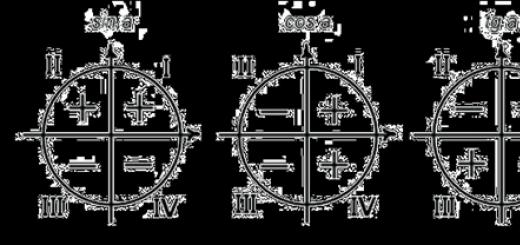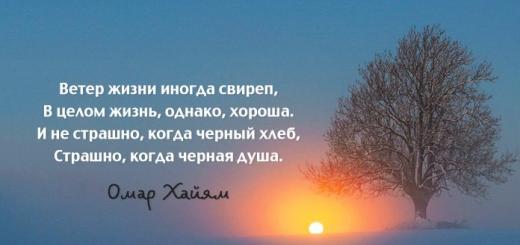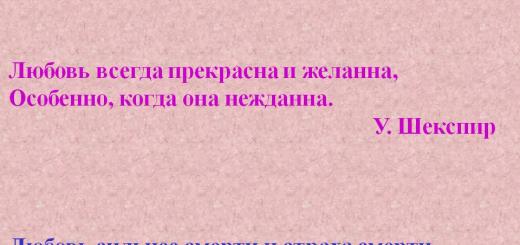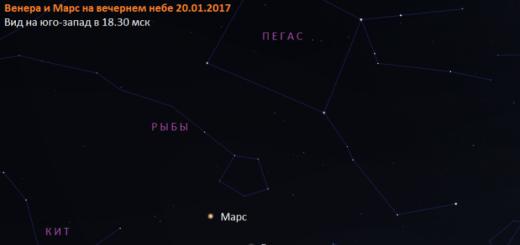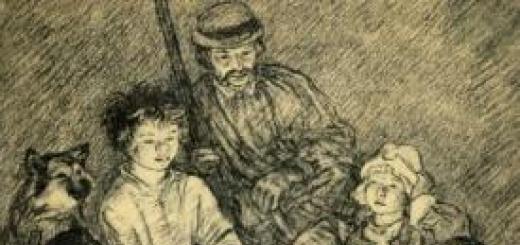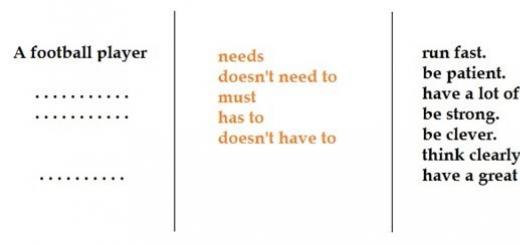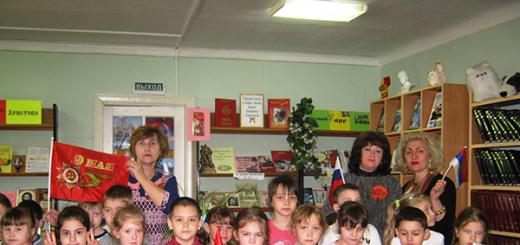Goals:
1) developing: development of attention, memory, speech, aesthetic feeling
2) educational: give knowledge about folk and literary fairy tales, teach how to answer questions correctly, and read expressively.
3) raising: awaken interest in reading, evoke a feeling of love for fairy tales, cultivate a sense of hard work, mutual assistance, and kindness towards adults.
Equipment; illustrations of fairy tales, individual items, exhibition of books.
Lesson plan.
Organizational moment .
Quiz:
A) riddles
B) proverbs, sayings,
C) work on illustrations of fairy tales.
3. Physical exercise
4. New topic:
A) introductory conversation,
B) reading in a chain
C) vocabulary and phraseological work,
D) reading “to oneself”,
D) conversation to clarify the general content of the text,
E) reading “by roles”.
5. Lesson summary:
A) reflection,
B) homework.
Progress of the lesson.
Organizational moment.
Let's smile at the sun.
Let's give each other a hand.
Let's cheer you up
For yourself and a friend.
On your desks there are drawings depicting the “sun” and “clouds”. Pick up a drawing that suits your mood.
Quiz.
- Guys, let's start the lesson with a quiz. I’ll see whose row is the most savvy, quick-witted, and resourceful.
A) solving riddles. Listen carefully.
Well, which of you will answer: not a fire, but it burns painfully, not a lantern, but shining brightly, and not a baker, but baking? (Sun)
What goes on without moving? (time)
You can see the edge, but you won’t get there. (horizon)
I've been wearing them for many years, but I don't know how to count them. (hair)
I swam in the water, but remained dry. (goose)
The riddle is a joke.
When a boy is called female name? (When he sleeps for a long time)
When do hands have three pronouns? (When they are you-we-you)
What does half an apple look like? (for the second half)
When the goat is seven years old, what happens next? (This is the eighth year)
What stones are not found in any sea? (dry)
B) Proverbs and sayings. The next stage of our quiz, I will say the beginning of the proverb, and you will pick up its end.
He who doesn’t work… (doesn’t eat)
No bread….(no lunch)
Labor feeds….(but laziness spoils)
A mind without a book...(like a bird without wings)
Learning is light...(and not learning is darkness
B) Work on illustrations of fairy tales.
Guys, look, what fairy tale is this illustration from?
“Sister Alyonushka, brother Ivanushka”
"Geese-swans"
"Snow Maiden"
"Turnip"
"Thumbelina"
"At the behest of the pike"
Look, the fabulous ones have come to usheroes-toys . Guess what fairy tales they are from?
Cockerel, from the fairy tale “Cockerel is the Golden Comb.”
Fish, from literary fairy tale"The Tale of the Fisherman and the Fish."
Little bear, from the fairy tale “The Three Bears”
(phone rings)
Guys, we got a call from the Lost and Found Bureau. They'll deliver it to us nowa basket of lost things.
What fairy tale is this extraordinary little red riding hood from? (“Little Red Riding Hood”).
Here comes the frog! What fairy tale is she from?
Well done guys, you know well not only folk tales, but also literary ones.
- Tell me, guys, what do fairy tales teach us?
(Children's statements)
That's right, guys, fairy tales teach us to be kind, to help our neighbors in trouble, to find a way out of different situations.
A fairy tale describes relationships between people, and the fairy tale form helps to understand these relationships and draw the right conclusions.
Listen, I’ll read the poems, and you can guess what books they are about..
“A girl is sitting in a basket
Behind Mishka's back,
Without knowing it himself,
Carrying her home
Well, did you guess the riddle?
Then answer quickly!
The title of this fairy tale..." Who is the author of the fairy tale?
Who am I? “Evening would soon approach
And the long-awaited hour has come,
May I be in a gilded carriage
Go to a fairytale ball.
No one in the yard will know
Where am I from, what is my name,
But it's only midnight
I'll go back to my attic."
What kind of fairy tales are there? (Fairy tales can be literary, folk, everyday, magical, heroic, tales about animals)
- Why do we need fairy tales today?(Children's statements)
3. Physical exercise ( We invite everyone to a fun exercise!)
Song by an unknown author “Radiant Sun”.
4 .New topic.
A)Teacher's introductory talk.- A fairy tale is one of the types of folk narrative literature: a work in prose or, less often, in verse, which talks about fictional events, sometimes of a fantastic nature.Today, guys, we will get acquainted with the Russian folk tale “Morozko”. The textbooks were opened. One student reads, and the others follow the reading and find unfamiliar words in the text.
b). Reading in a chain.
V). Vocabulary work. Stepdaughter, bit.
G).Reading “to yourself”, Preparation for work on the content of the fairy tale.
d). Content work
Did you like the fairy tale? What did you especially like?
How is the stepmother depicted?
Describe your stepdaughter, what she was like.
And Grandfather Frost?
Answers to questions and completion of tasks placed in the textbook after the text.
e).Reading by roles
5. Lesson summary. Reflection. Homework.
Sources usedPoems: K. Sevyarynets, E.S. Aksamentova
Guess the fairy tale.
Russian folk tale "Morozko"
Genre fairy tale
The main characters of the fairy tale "Morozko" and their characteristics
- Stepdaughter, daughter of an old man, hardworking, kind, polite. He receives great gifts for modesty and kindness.
- Stepmother's daughter, angry, lazy and rude. Frozen for rudeness.
- Morozko, winter wizard, lord of frost. Fair, powerful.
- Grandfather, old man, weak-willed, weak-willed
- Stepmother, evil, treacherous, cruel.
- Grandfather and stepmother
- The stepdaughter is taken to the forest
- Morozko
- Stepdaughter's Politeness
- Rich Gifts
- Dog Prophecy
- Stepmother's daughter is taken to the forest
- The girl's rudeness
- Return of the frozen girl
- There lived an old man and his new wife, and their two daughters.
- The stepmother wants to kill her stepdaughter and sends her to the forest
- Morozko tries to freeze his stepdaughter, but she remains polite
- The return of the stepdaughter with rich gifts
- Stepmother sends her daughter to the forest
- The stepmother's daughter is rude to Morozko and returns as a corpse.
If you treat others politely, you will receive glory and honor.
What does the fairy tale "Morozko" teach?
This fairy tale teaches not to wish harm on others. Teaches you to love your children equally, no matter whether they are biological or adopted. Teaches politeness and fairness. Teaches not to envy someone else's things.
Review of the fairy tale "Morozko"
I really like this fairy tale, although I feel a little sorry for my stepmother’s own daughter. Still, the punishment was too cruel for her. Every person should have a chance to improve. But the kindness and politeness of the Stepdaughter turned out to be stronger than the evil frost, she showed miracles of patience and humility, and for this she received a great reward.
Proverbs for the fairy tale "Morozko"
Politeness costs nothing and brings a lot.
Mother grabbed her stepdaughter when the ice passed
Summary, brief retelling fairy tales "Morozko"
A grandfather lived with his new wife and they had two daughters. One is for the stepmother, the other is for the mother. The native daughter rolled around like cheese in butter, and the adopted daughter was kept in a black body.
So the stepmother decided to live with her completely adopted daughter in the world, and ordered her grandfather to take her to the forest and leave her there.
My grandfather took me and left my daughter under the Christmas tree. She sits in the snow, freezing.
Then Morozko comes down the branches and asks, “Are you warm, girl?”
And the girl politely replies that it’s warm. Morozko freezes more severely, but the girl remains polite. Morozko liked this, he took pity, dressed his adopted daughter in a fur coat and left rich gifts.
And the stepmother demands that the grandfather go to the forest to get his stepdaughter’s bones.
At this time she bakes pancakes herself. And the dog barks that they will bring the old man’s daughter in gold and silver. The stepmother swears at the dog and says that they will bring the bones. And then the old man’s daughter comes in, dressed in gold and silver, and with rich gifts.
The stepmother tells the old man to take his own daughter to the forest, wearing a fur coat, of course. The old man took it and planted it under the Christmas tree. Morozko came and began to freeze the girl. And the stepmother’s daughter swears and calls her names. Morozko got angry and froze her to death.
The old man brought the stepmother's daughter, the stepmother opened the matting, and the daughter lay dead.
Signs fairy tale in the fairy tale "Morozko"
- Magical creature - Morozko.
Analysis of Russian folk tale Morozko
A fairy tale known to us from childhood “ Morozko” – Russian folk fairy tale. It is considered a New Year's, Christmas, or simply winter's tale. The plot of the fairy tale “Morozko” is a variation on the theme of an innocently persecuted positive hero (stepdaughter), who comes to the rescue of a wonderful assistant ( Morozko) and rewards the hero for meekness, humility, kindness and hard work.
The Russian fairy tale “Morozko” is included in the school literature curriculum due to its obvious educational and moralizing orientation. The main characters of the fairy tale “Morozko” are clearly divided by child readers into positive and negative. The main idea of the tale- reward according to deeds, triumph of justice (humility and gentleness will be rewarded, but pride and anger will be punished) - easily read by students.
Fairy tale characters Morozko”
The main character of the fairy tale is the stepdaughter, a hardworking, helpful and meek girl - a “socially disadvantaged character” in the stepmother’s house: “Everyone knows how to live with a stepmother: if you turn over, you’ll get a bat and if you don’t turn over, you’ll get a bat...” The stepdaughter did all the housework, but never was able to please the evil, cruel stepmother.
According to the canon of fairy tales, the heroine leaves home before finding her happiness. The reason is that the hero-saboteur (stepmother) drives her out: “So the stepmother came up with the idea to drive her stepdaughter away from the world. “Take her, take her, old man,” he says to her husband, “where you want my eyes not to see her!” Take her to the forest, into the bitter cold.”
The stepdaughter's character is so meek that she does not argue or resist when her own father leaves her in the cold winter forest. And she behaves just as meekly when main character fairy tales - Morozko - tests her character, increasing and intensifying the frost. The girl’s answers are friendly, despite the bitter cold. For this, Morozko takes pity on the girl and generously gifts her. Wealth as a reward is a characteristic device of folk tales.
The stepmother, domineering, envious and greedy, seeing her stepdaughter unharmed and with rich gifts, orders the old man to take her own daughter (the anti-heroine) to the same place in the forest. The main reason for such envy is clear from the words of the dog: “An old man’s daughter is in gold, they bring him in silver, but they don’t marry an old woman.” It is for the dowry that the old woman sends her beloved daughter out into the cold.
The situation in the forest repeats itself: Morozko appears and subjects the girl to the cold test three times. She, however, is not endowed with kindness or meekness and is filled with pride. Her answers are rude and disrespectful, and Morozko cruelly punishes this heroine: she dies from the cold.
With such a tragic ending, the folk tale “Morozko” shows the reader how cruelly the people condemn envy, greed, anger and oppression of the weak and defenseless, which was the stepdaughter. The behavior of the negative heroes of the fairy tale, the stepmother and her own daughter, causes a rejection of anger and injustice in the child’s soul. And the punishment that the girl suffered is perceived by the young reader as a triumph of justice.
It is curious that today the Russian fairy tale “Morozko” causes quite a lot of discussion about its interpretation. The fairy tale is reproached for bloodthirstiness, for affirming dubious ideals (meekness instead of assertiveness, emphasis on the value of material goods). There are proposals to protect the modern child from unnecessary cruelty by refusing to read folk tales.
However, we should not forget about the historical roots of the folk tale - the narration here is determined by the realities of the time when the fairy tale was created. Some harshness, and even cruelty, can also be justified by the goal pursued by the creators of the fairy tale: instruction, edification of the younger generation. And the more specifically the instruction is expressed in this case, the stronger the educational impact.
Fairy tales preserve the centuries-old wisdom of the people, and the task of modern parents and teachers is not to break the connection between generations, but to help the child correctly read and perceive the centuries-old folk wisdom.
Name of the lesson
"Morozko" (Russian folk tale).
General goal
Promoting the formation of skills to work with literary text;
Learning outcomes for teachers (expected results)
Students will demonstrate skills:
understand the text; extract information from text and analyze it; use different techniques for working with information; express your thoughts orally and in writing; work in a group (play certain roles, be able to hear and listen to each other).
Key ideas covered in class
"As is the work, so is the reward"
Techniques for working with text
"Insert" technique; basket of questions, "Cinquain"; thin, thick, creative questions;
Lesson topic: Russian folk tale "Morozko".
Target: Introduction to the Russian folk tale "Morozko"
Tasks : Learn to work with text, highlight main idea, be able to characterize the main characters, describe them.
Develop oral speech, enrich vocabulary, develop creative thinking.
Instill a love of books and encourage children to read more.
Cultivate kindness and faith in fairy tales.
Lesson type : integrated.
Equipment: textbooks, notebooks, colored pencils, interactive whiteboard, slides, proverbs, coloring pages.
Progress of the lesson.
Org. moment.
Psychological attitude
The bell rang and fell silent,
Let's start our lesson.
We sat down together at our desks,
They looked at each other.
Wish you success with your eyes -
And forward, for new knowledge.
Division into groups (composition - 4-5 people) selection of figures
Please guys choose yours geometric shapes. Let's create groups
It is easier for the children who have chosen the same figures to work in the same group. I think you in your group are using all your knowledge and skills today. So let's start the lesson! Good luck! So let a good mood accompany us throughout the entire lesson.
And for your correct answers and for good job I will give you snowflakes - a symbol of winter.
3. Statement of the topic and purpose of the lesson. -Guys, close your eyes and listen, what do you hear?(Listening to the sounds of winter: snowstorm, crunching snow, wind...)-What time of year is this typical? (winter)-Today we will continue to talk about winter.
Old man at the gate
The warmth was stolen away
Doesn't run on his own
And he doesn’t tell me to stand.
Whose drawings are on the window,
What's the pattern on the crystal?
Pinches everyone's nose
Winter grandfather...
Answer (Frost)
How can you affectionately call him? That's right - Frosty.
Today we will get acquainted with the Russian folk tale “Morozko”.-In the lesson we will: listen, read expressively, highlight the main idea.4. Primary reading. -We have prepared the pencils and mark the unclear words.-Reading the text by the teacher.-Tell me, is the fairy tale over?5. Vocabulary work. What words were unclear except those written on the board?– A stepmother is not a natural mother.– A stepdaughter is not a natural daughter.- He tightened his grip - he became sad.– Chills – frozen to the point of trembling.- To ossify - to freeze to death.- I took pity - I regretted it.- She started screaming, screaming loudly, crying.-Encourages - forces
Remember what words fairy tales begin with? This is the beginning of a fairy tale.
Find and read the beginning of the fairy tale
Name the heroes of the fairy tale.
Let's characterize each of the heroes of the fairy tale.
6. Group work Fishbone
1 group-
Stepmother
Group 2-
Stepmother
Comparative characteristics stepdaughters and stepmother's daughters in words from a fairy tale.
(children do it independently on cards)
Stepdaughter
Stepmother's Daughter
Hardworking
Can't do anything, lazy
Economic
Evil
Friendly
Gloomy
Kind
Pushes her sister around, not well-mannered
Cheerful
Greedy
Describe Morozko.
Why didn't Morozko freeze the girl? (text excerpt)
Why did Morozko give the sisters different gifts?
How do you think the fairy tale ended? (read the end of the story)
What conclusion can be drawn?
Physical exercise.
A clubfooted bear walks through the forest
He collects the cones and puts them in his pocket.
The cone bounced right into the bear’s forehead,
The bear got angry - and stomped his foot!
8.Working with a deformed plan. Puzzles -Place the parts of the plan in the right order.Meeting of the stepdaughter with Morozko.The old woman's daughter in the forest.The old man takes his stepdaughter to the forest.Gift chest
9. Highlighting the main idea. -What work did we get acquainted with?So let's draw a conclusion? What does a fairy tale teach us?Good is rewarded and evil is punished.
(Don't judge a person by appearance, look deeper, evaluate people by their spiritual merits, their deeds.)
The fairy tale teaches us to distinguish good from evil, good from bad.
What proverbs fit this fairy tale?
1. If you want a lot, you will lose the last.
2. He who honors his parents will never perish.
3. As it comes back, so will it respond.
4. A kind person is more likely to do something than an angry one.
5.As is the work, so is the reward.
6. Labor feeds a person, but laziness spoils him.
10. Consolidation of what has been learned.
How many parts can a fairy tale be divided into?
How can you title each part?
1). The stepmother kicked her stepdaughter out of the yard.
2).Meeting with Morozko.
3).Morozka's reward.
4). The old woman's daughter in the forest.
Retelling the tale in parts. (at home)
– It would be wrong if we forgot that every year, a fairy tale comes to every home in the form of Santa Claus, whom we all love and wait for. He lives in Veliky Ustyug.
Which heroine could be suitable for the role of the Snow Maiden? Why?
Reflection.
Did you like the lesson?
What did you like?
What do you remember most?
The fairy tale is a lie, but there is a hint in it - a lesson for good fellows.
Submitting your good work to the knowledge base is easy. Use the form below
Students, graduate students, young scientists who use the knowledge base in their studies and work will be very grateful to you.
Posted on http://www.allbest.ru/
1. The Russian folk tale "Morozko" is considered a New Year's, Christmas, and winter tale. The fairy tale "Morozko" refers to magical and fantastic fairy tales, since one of the heroes is a magical character. In such fairy tales, the positive hero is always helped by magical characters so that good and truth defeat evil and lies.
An old man and an old woman lived in a village, and with them lived the old woman’s own daughter and the old man’s own daughter. The old woman disliked her stepdaughter and forced her to do all the housework, which the girl meekly did in the best possible way. But it was impossible to please the stepmother, and one day she decided to take the girl away from the world, ordering the old man to take her stepdaughter to the winter forest and leave her. The old man, crying, took his daughter to the forest and left her under a spruce tree, where the girl met Morozko, who, having tested her temper, presented her with expensive gifts. Then the stepmother sent her stupid and lazy daughter into the forest, hoping to see her with gifts, but her daughter did not pass Morozko’s tests, and the old man brought her from the forest frozen.
The instructive fairy tale “Morozko” condemns human envy and greed, and also talks about how important it is to be kind and hardworking. A fairy tale is folk wisdom(Don’t dig a hole for someone else, you will fall into it yourself!), which is presented in a form that is understandable and accessible to children. The behavior of the negative heroes of the fairy tale (the stepmother and her own daughter) causes rejection of anger and injustice. And the punishment that the girl suffered is perceived by the reader as a triumph of justice. The tragic ending of the tale reflects how much the mentality of the Russian people rejects anger, oppression of the defenseless and weak (the stepdaughter) and what kind of retribution for evil happens.
Positive female image fairy tales "Morozko" - this is the main character, the stepdaughter - a hardworking, helpful and meek girl. The stepdaughter's character is so meek that she does not argue or resist when her own father leaves her in the cold winter forest. And she behaves just as meekly when Morozko tests her character, increasing the frost more and more. The girl’s answers are friendly, despite the bitter cold, for which Morozko takes pity and generously gifts the girl.
Positive male image in a fairy tale - this is an old man, the father of the main character. He is kind and meek, but weak in front of the evil and assertive old woman. The old man silently looks at the injustice towards his daughter and cannot object to anything.
Negative images in the fairy tale "Morozko" only women are the stepmother and her daughter - powerful, angry, greedy and envious, they only do what oppress main character. By forcing their stepdaughter to work all day, they are never satisfied with her work.
The only one magically Morozko appears in the fairy tale - he is both a stern and kind wizard who, according to tradition, first tests the heroes and then rewards or punishes them fairly.
2. Beginning fairy tales“Morozko” is replete with everyday pictures and has little reminiscent of magical circumstances. The fairy tale begins like this: “Once upon a time, there was a grandfather who lived with another wife. The grandfather had a daughter, and the woman had a daughter.”
IN development of action planned the beginning of a fairy tale: “So the stepmother came up with the idea to drive her stepdaughter away from the world. Take her, take her, old man,” he says to his husband, “where you want my eyes not to see her!” Take her to the forest, into the bitter cold.”
The stepdaughter's character is so meek that she does not argue or resist when her own father leaves her in the cold winter forest. And she behaves just as meekly when the title character of the fairy tale, Morozko, tests her character, increasing the frost more and more. The girl’s answers are friendly, despite the bitter cold. For this, Morozko takes pity on the girl and generously gifts her. The stepmother, domineering, envious and greedy, seeing her stepdaughter unharmed and with rich gifts, orders the old man to take her own daughter to the same place in the forest. The old woman collects the dowry and sends her beloved daughter out into the cold.
Climax occurs when the situation in the forest repeats itself: Morozko appears and subjects the girl to the cold test three times. She, however, is not endowed with kindness or meekness and is filled with pride. Her answers are rude and disrespectful, for which she paid.
Denouement occurs when Morozko cruelly punishes this heroine: she dies from the cold. With such a tragic ending, the folk tale “Morozko” shows the reader how harshly the people condemn envy, greed, anger and oppression of the weak and defenseless, which was the stepdaughter. And the punishment that the girl suffered is perceived as a triumph of justice.
The fairy tale “Morozko” does not have a beautiful ending, which usually ends with fairy tales with a happy ending. Here we see the triumph of good over evil, traditional for fairy tales, and an instructive end of the fairy tale.
3. In the fairy tale "Morozko" the main actions take place in the winter forest, but description of the forest very briefly: large snowdrifts and fir trees are crackling from the frost. This is the ice kingdom of Morozko. Here, under a large fir tree, the old man left his daughter, and then the old woman’s daughter. Here the girls meet Morozko twice.
In the beginning of the fairy tale, the first thing happens monologue old women:
Take her, take her, old man,” he says to his husband, “where you want my eyes not to see her!” Take her to the forest, into the bitter cold.
To this monologue, the old man, without answering his wife, dutifully takes his own daughter into the forest into the cold.
Warm, Morozushko, warm, father.
Because of her meek disposition, the girl does not die, but enriches herself with the help of Morozko and returns home.
Later, the old woman sends her daughter to the forest, but for a different purpose. The order for the old man sounds again ( monologue old women):
Harness another horse, you old bastard! Take, take my daughter to the forest and put her in the same place...
It's happening again in the forest dialogue Morozko and girls, but it is different from the first:
Are you warm, girl? Are you warm, red one?
Oh, my hands and feet are frozen! Go away, Morozko...
Her answers are rude and disrespectful, and Morozko cruelly punishes this heroine: she dies from the cold.
“Morozko got angry and got so angry that the old woman’s daughter became numb” - this is the only hyperbola fairy tales Hyperboles have an emotional and national character and create the expressive tone of a fairy-tale narrative.
In the fairy tale "Morozko" there are several comparisons:
The domineering, envious and greedy stepmother is a meek, soft and dutiful old man;
The lazy, stupid and evil daughter of an old woman is a hardworking, helpful and meek stepdaughter. These comparisons clearly show where the negative and where the positive character is, where there is good and where there is evil. Such examples teach children to compare.
A fairy tale always has two levels: external - plot and metaphorical - subtextual; it contains wisdom, carefully passed on to us by our ancestors, turned into a fairy tale. In the form metaphors an important idea more easily seeps through all the doors of consciousness and gets into the very depths of the soul, allows you to think about your life, your goals and desires, talk about possible consequences of this or that behavior and gives you the opportunity to look at yourself from the outside.
In the fairy tale "Morozko" there are no obvious magical transformations. Morozko magically rewards his stepdaughter for her human qualities and saves her from death, contrary to all expectations.
4. Fairy tales are characterized by the following compositional feature: repetition three times any episode with subsequent intensification of the effect. In the fairy tale “Morozko”, this technique is used during meetings with Morozko in the forest, when he asks each girl three times: “Are you warm, girl? Are you warm, red one?” After each answer from the girl, the frost intensifies. The technique of repeating three times has a special meaning in each specific case. More often, this technique is used to show how great the severity of the test that the main character of the fairy tale goes through.
This fairy tale contains folk expressions taken from the life of ordinary people, as well as the idea of the fairy tale itself:
“Everyone knows how to live with a stepmother: if you turn over, you’ll get a bat, and if you don’t turn over, you’ll get a bat. And no matter what my own daughter does, she gets a pat on the head for everything: she’s smart.”
“Even if the wind makes a noise, it calms down, but the old woman disperses - she won’t calm down soon.”
5. The Russian folk tale “Morozko” is written concisely and extremely accurately tongue. But still, in the fairy tale there are diminutive words that are used only by the stepdaughter and Morozko when they meet in the forest, which further highlights the positivity of these heroes as an example to children.
6. A fairy tale is important not only in understanding the world around us, but also how educational moment. The fairy tale contains a warning, an instructive moral, and a demonstration of a positive style of behavior (the value of politeness, kind attitude towards people, respect for elders, hard work). Children learn to think about their actions fairy-tale heroes, determine what is good and what is bad. The child’s speech is also enriched with the help of epithets often found in fairy tales. The child learns to think in images. The ability to endow objects and phenomena with supernatural properties, to believe in the animation of inanimate nature - characteristic feature child's psyche. Behind the seemingly implausible fairy-tale plots one can clearly see true story life of the Russian people. But fairy tales would not be fairy tales if they lacked entertainment.
The fairy tale "Morozko", like most Russian folk tales, is suitable for children of all ages. The fairy tale lulls you, immerses you in an atmosphere of magic and wonder. She teaches adults to look at the world with a direct, open gaze, points out their shortcomings, and important life truths are revealed to children in an easy and entertaining way. Thus, while gaining experience in solving problems using “fairy-tale” methods, the child transfers it to real situations in life.
climax frost fairy tale plot
Posted on Allbest.ru
Similar documents
Multi-level structure of a literary text using the example of the Russian folk tale "Geese and Swans". Identifying Features structural components and their relationships. Transformation of myth in a fairy tale. Signs of a fairy tale. Theme of the fairy tale "Geese and Swans".
abstract, added 10/15/2015
Analysis of aesthetic motives for Pushkin’s appeal to the genre of artistic fairy tales. The history of the creation of the work “The Dead Princess and the Seven Knights”, an assessment of its uniqueness and the originality of the characters. The theme of fidelity and love in Pushkin. Speech organization of a fairy tale.
course work, added 01/26/2014
Fairy tales, works of folk literature, almost exclusively prose, partly of objectively epic content, partly for didactic purposes, exist among all peoples. In fairy tales, mythological elements are mixed with historical legends.
abstract, added 06/04/2003
Social problems, highlighted in the fairy tale story “The Adventures of Cipollino” by Gianni Rodari. Direction, type and genre of the work. Ideological and emotional assessment of the fairy tale. Main characters, plot, composition, artistic originality and the meaning of the work.
book analysis, added 04/07/2017
Comparative analysis Russian and English fairy tale. Theoretical foundations fairy tales as a genre literary creativity. Identification of morality in aestheticism in the fairy tales of O. Wilde. The problem of the relationship between heroes and the surrounding world using the example of the fairy tale "The Young King".
course work, added 04/24/2013
Mythological chronotope of a fairy tale, characterization of the hero using the example of the fairy tale “Little Red Riding Hood”, its analysis according to the structure of V.Ya. Proppa. Functions and their characteristics. The connection between a fairy tale and myth as a feature of the chronotope of the genre. Initiation rite, benefits received.
creative work, added 12/03/2012
Studying genre features author's fairy tale. The difference between literary and folk tales in genesis, form, content, volume and language. Presence in different fairy tales game beginning, the presence of an “image of the author,” a combination of the real and the fantastic.
abstract, added 06/23/2014
The history of the creation and publication of the fairy tale by P.P. Ershov "The Little Humpbacked Horse". The originality of the genre of the work, the expressiveness of the style and the originality of the plot. Classic three-part form and its content. Images, characters, theme and idea of a fairy tale. The thoughts and aspirations of the people.
abstract, added 11/15/2010
Definition of a literary fairy tale. The difference between a literary fairy tale and science fiction. Features of the literary process in the 20-30s of the twentieth century. Tales of Korney Ivanovich Chukovsky. Fairy tale for children Yu.K. Olesha "Three Fat Men". Analysis of children's fairy tales by E.L. Schwartz.
course work, added 09.29.2009
Tales about animals, their varieties. Images of wild and domestic animals. Comparative analysis of wolf and fox. The stupidity of the fox in the fairy tale "The Fox and the Blackbird". "The Wolf and the Seven Little Goats", moral of the tale. Animal images as a means of moral teaching and social satire.



